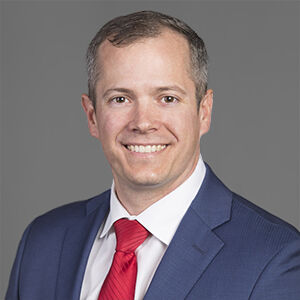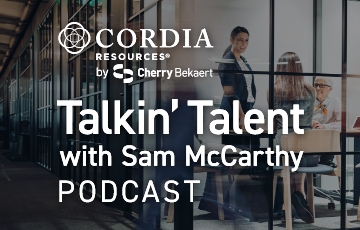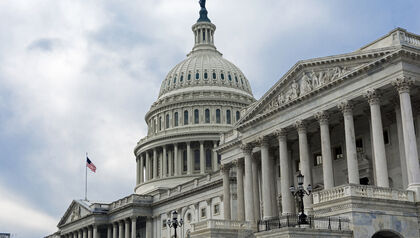The 2025 tax reform, signed into law as P.L. 119-21, Republicans’ “One Big Beautiful Bill,” ushers in a new era for Opportunity Zones (OZs), one of the most ambitious place-based investment programs in U.S. history.
Established by the Tax Cuts and Jobs Act (TCJA), the Qualified Opportunity Zone program (QOZ) was designed to spur long-term investments and economic growth in low-income communities by offering tax incentives to investors who invest capital gains into specially designated OZs. It provided both a temporary deferral of those gains and, for long-held investments, a permanent exclusion of additional appreciation.
The 2025 reform not only extends the program but transforms it into a long-term strategic tax planning tool with new compliance requirements, rural-focused enhancements and estate planning potential.
Join Cherry Bekaert for a CPE-eligible webinar, Opportunity Zones 2.0: Navigating the New Tax Landscape, designed to unpack the latest IRS guidance on OZs and what it means for investors, developers and fund managers.
Opportunity Zone Tax Reform Bill Highlights: Summary of Key Changes
|
Provisions |
2017 TCJA |
2025 Tax Reform |
|
Program Length |
Expires after December 31, 2026 |
Permanent, with 10-year reviews |
|
Capital Gains Deferral |
Only for gains reinvested by 2026 |
Rolling deferral through 2033 |
|
Inclusion Event |
Tax year 2026 |
Earlier of five years after deferral year or sale of investment |
|
Basis Step-up |
10% at five years, 5% at seven years |
10% at five years 30% basis step-up for investment in rural zone |
|
Step-up to Full Fair Market Value (FMV) |
Sell or exchange by December 31, 2047 |
For investments sold or exchanged before 30 years, the step-up will reflect the FMV of that investment as of the date such investment is sold or exchanged For investments held 30 years or more, the basis step up will be frozen at the FMV on the 30th anniversary of the investment |
|
Zone Designations |
Fixed under 2017 designations until 2028 |
New zones from 2027, rural emphasis, redetermine every 10 years |
|
Compliance |
Basic reporting |
Enhanced IRS reporting + penalties for noncompliance |
New Opportunity Zone Legislation Changes
Take a closer look at the individual changes impacting the Opportunity Zone program:
Permanent Opportunity Zone Program With Rolling Designations
P.L. 119-21 eliminates the December 31, 2026, sunset. The QOZ program is now permanent, with new zones designated every 10 years. The next designation period begins in July 2026, with new zones taking effect January 1, 2027.
This structural shift provides investors with long-term certainty and the flexibility to plan multi-year capital deployment strategies without the looming pressure of a fixed “investment by” date. Fund managers can now structure Qualified Opportunity Funds (QOFs) with greater confidence in regulatory continuity, enabling more sophisticated fund design and investor engagement.
Meanwhile, local governments benefit from recurring opportunities to nominate zones that align with evolving economic development goals, allowing for more responsive and targeted community revitalization efforts.
Capital Gains Deferral & Holding Period Incentives for OZ Investors
Under the new administration, capital gains can be reinvested into QOFs until December 31, 2033, and taxes on the original gain (inclusion event) deferred to the earlier of a) five years after the date of investment or b) the sale of the investment. This rolling deferral period provides a much more flexible and appealing deferral than the prior inclusion fixed date of December 31, 2026.
The traditional 15% basis step-up for seven-year holds is replaced with a simplified structure:
- 10% basis step-up after five years (standard)
- 30% basis step-up after five years for investments in Qualified Rural Opportunity Funds (QROFs)
- Inclusion event five years after investment date (rather than fixed date such as December 31, 2026)
- Full FMV basis step-up on investments sold after being held at least 10 years, eliminating tax on all appreciation
- Full FMV basis step-up on investments held 30 years, eliminating tax on all appreciation versus the prior regulations which required a sale or exchange by December 31, 2047, to benefit from the full appreciation basis step-up.
These changes offer mid-term investors a streamlined planning path with the flat 10% step-up, while long-term investors and family offices can now incorporate QOZs into estate and legacy strategies with the 30-year FMV exclusion. Additionally, rural-focused developers gain a competitive advantage through enhanced basis boosts and more lenient improvement thresholds, making rural projects more financially viable and attractive under the new framework.
Rural Emphasis & Redefined Eligibility Criteria
P.L. 119-21 narrows the definition of eligible tracts to those with income below 70% of the state or metropolitan median. It also introduces a new class of opportunity zones, QROFs, with favorable treatment, including:
- Lower substantial improvement threshold (50% instead of 100%)
- A 30% basis step-up after five years
- New zone designations effective January 1, 2027, with a focus on rural and underserved areas
On September 30, 2025, the U.S. Department of the Treasury and the Internal Revenue Service (IRS) issued Notice 2025-50, which formally defines rural OZs and introduces updated criteria for the application of the substantial improvement threshold for improvements made to property located in an OZ in a rural area. Notice 2025-50 further defines rural OZs as census tracts outside metropolitan statistical areas (MSAs) or with populations under 50,000 and identifies 3,309 2018 qualifying zones. Additionally, the Notice clarifies for qualified property located in a rural OZ, the substantial improvement test is met if the additions to basis exceed 50% of the basis rather than the standard 100% improvement standard.
These updates reflect recent legislative changes that made the OZ incentive permanent and established new standards for compliance and reporting. These changes create a compelling opportunity for developers to begin scouting rural markets now and secure land ahead of the next designation cycle.
Investors can diversify their portfolios with rural projects that offer enhanced tax benefits and lower entry costs, while community stakeholders may see increased capital flow into areas that were previously overlooked under the original 2017 maps. This rural emphasis not only broadens the geographic reach of the program but also aligns with broader federal goals of revitalizing economically distressed non-urban regions.
IRS Reporting Requirements for OZ Funds and Investors
P.L. 119-21 introduces new IRS reporting obligations under Internal Revenue Code (IRC) Sections 6039K and 6039L, metrics on job creation, environmental impact, community engagement and increased penalties for noncompliance. This shift aims to improve transparency and policy evaluation. Funds and investors must now track basis, improvements, and holding periods with greater precision and consistency.
As a result, fund sponsors will need to upgrade their data systems and compliance infrastructure in 2025 to meet these enhanced disclosure standards. Investors, in turn, should ensure that their advisors and fund managers are fully equipped to handle the increased reporting burden, including the ability to generate accurate and timely documentation for IRS review. These changes underscore the importance of proactive compliance planning and technology investment as the OZ program enters a new era of regulatory oversight.
Key Tax Planning Priorities for OZ Investors in 2025
As the OZ program enters a new era under the 2025 tax reform, investors and fund managers should take proactive steps to align with the updated rules and maximize long-term benefits. Key priorities include:
- Start 30-year Planning Conversations: The new full FMV basis step-up after 30 years creates a powerful incentive for family offices and multi-generational investors to begin long-term OZ strategies now.
- Position for New Rural or Redesignated Tracts: With new zone designations expected in 2027, investors should begin due diligence in 2025 to acquire land or prepare projects in areas likely to qualify, potentially locking in lower acquisition costs and enhanced rural incentives.
- Upgrade Reporting Infrastructure: Given P.L. 119-21’s emphasis on compliance, investors and funds must bolster their data systems in 2025 to accurately track basis, improvements, and holding periods, and to fulfill the enhanced IRS reporting requirements under Sections 6039K and 6039L.
These action items will help stakeholders stay ahead of regulatory changes and capitalize on the expanded potential of the OZ program.
Your Guide Forward: Planning for Long-term OZ Success
The 2025 tax reform transforms OZs from a time-sensitive incentive into a cornerstone of long-term tax and investment strategy. With expanded benefits, rural-focused enhancements and new compliance requirements, 2025 is a pivotal year for repositioning capital and planning for decades of tax-advantaged growth.
To model scenarios under the new rules, evaluate rural investment opportunities, or upgrade your compliance infrastructure, connect with a Cherry Bekaert advisor. Our OZ professionals can help you navigate the new landscape and unlock its full potential.
Upcoming Webinar
Cherry Bekaert invites you to a CPE-eligible webinar, “Opportunity Zones 2.0: Navigating the New Tax Landscape,” where industry professionals will explore the newest IRS rulings on Opportunity Zones and their impact on stakeholders including investors, developers and fund managers.








